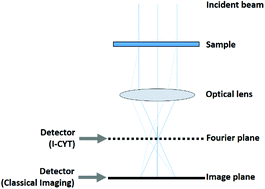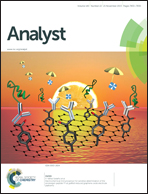An image cytometer based on angular spatial frequency processing and its validation for rapid detection and quantification of waterborne microorganisms
Abstract
We introduce a new image cytometer design for the detection of very small particulates and demonstrate its capability in water analysis. The device is a compact microscope composed of off-the-shelf components, such as a light emitting diode (LED) source, a complementary metal-oxide-semiconductor (CMOS) image sensor, and a specific combination of optical lenses that allow, through an appropriate software, Fourier transform processing of the sample volume. Waterborne microorganisms, such as Escherichia coli (E. coli), Legionella pneumophila (L. pneumophila) and phytoplankton, are detected by interrogating the volume sample either in a fluorescent or label-free mode, i.e. with or without fluorescein isothiocyanate (FITC) molecules attached to the micro-organisms, respectively. We achieve a sensitivity of 50 cells per ml, which can be further increased to 0.2 cells per ml by pre-concentrating an initial sample volume of 500 ml with an ad hoc fluidic system. We also prove the capability of the proposed image cytometer of differentiating microbiological populations by size with a resolution of 3 μm and operating in real contaminated water.



 Please wait while we load your content...
Please wait while we load your content...